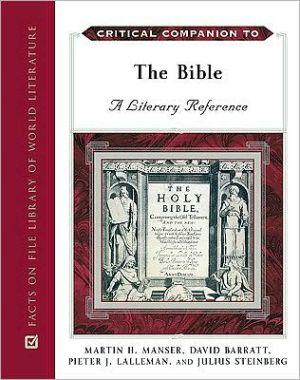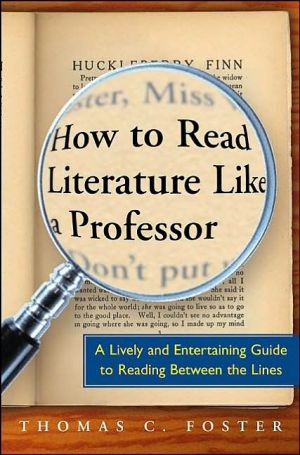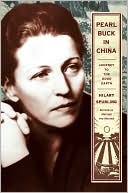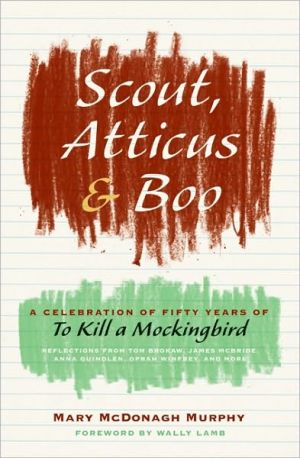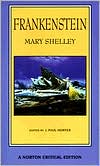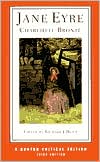Critical Companion to the Bible
Critical Companion to the Bible examines the Bible as a work of literature, focusing on its language and verbal structures and on the imaginative quality of its thought. This invaluable resource is an essential addition to high school and college literature and religion classes.
Search in google:
Critical Companion to the Bible examines the Bible as a work of literature, focusing on its language and verbal structures and on the imaginative quality of its thought. This invaluable resource is an essential addition to high school and college literature and religion classes.Library JournalThe authors of this book, all established researchers in the field of biblical studies, have compiled a volume that best serves as an introduction to biblical literary criticism for high school students and a general adult audience. Part 1, "Reading the Bible as Literature," serves as an introduction to all types of biblical criticism for Jewish, Catholic, and Protestant traditions. Part 2, "Books of the Bible," covers every book for each tradition, and includes a general introduction to each book, a summary of the events, literary commentary on the book, and a list of the figures appearing in it. Entries in this part range from one to about ten pages in length and include black-and-white illustrations. Part 3, "Related Entries," covers people, places, concepts, and themes not included in Part 2 or that appear across numerous books, such as Abraham, Apocrypha and Pseudepigrapha, and biblical poetry. Appendixes include a chronology, lists of biblical books in various versions, a detailed bibliography, useful web sites, and a general index. BOTTOM LINE Although it does not meet the needs of upper-division university bible students or scholars, this work will serve its intended audience of high school students and lay readers owing to its approachable language and an eye-pleasing layout. Recommended for public libraries and high school and undergraduate libraries that support biblical literary criticism study.—Rosanne M. Cordell, Indiana Univ., South Bend
Pt. I Reading the Bible as LiteraturePt. II Books of the Bible, A-ZPt. III Related EntriesPt. IV AppendixesChronologyLists of Biblical BooksBibliographyUseful Web SitesIndex
\ Library JournalThe authors of this book, all established researchers in the field of biblical studies, have compiled a volume that best serves as an introduction to biblical literary criticism for high school students and a general adult audience. Part 1, "Reading the Bible as Literature," serves as an introduction to all types of biblical criticism for Jewish, Catholic, and Protestant traditions. Part 2, "Books of the Bible," covers every book for each tradition, and includes a general introduction to each book, a summary of the events, literary commentary on the book, and a list of the figures appearing in it. Entries in this part range from one to about ten pages in length and include black-and-white illustrations. Part 3, "Related Entries," covers people, places, concepts, and themes not included in Part 2 or that appear across numerous books, such as Abraham, Apocrypha and Pseudepigrapha, and biblical poetry. Appendixes include a chronology, lists of biblical books in various versions, a detailed bibliography, useful web sites, and a general index. BOTTOM LINE Although it does not meet the needs of upper-division university bible students or scholars, this work will serve its intended audience of high school students and lay readers owing to its approachable language and an eye-pleasing layout. Recommended for public libraries and high school and undergraduate libraries that support biblical literary criticism study.—Rosanne M. Cordell, Indiana Univ., South Bend\ \ \ \ \ School Library JournalGr 9 Up—Depth, breadth, objectivity, and clarity distinguish this fine guide to a literary study of the Bible. Part one offers 11 pages of essential background on such topics as the canon; authorship (human and divine); past approaches (systematic, historical, literary/canonical); and reading the Bible as literature. Part two provides a description, synopsis, and commentary for each book (and character analysis where appropriate). While the language is not simplified, it is generally accessible and even graceful. Both literalist and critical views are fairly represented, and the authors treat the Hebrew Bible sensitively. Considerations of genre, theme, style, structure, readership, aim, and historical-social background enrich the articles. A final 100 pages of brief encyclopedia entries (concepts, literary terms, names, etc.) and an extensive chronology and bibliography add value. The index, however, is scanty. Theological disputes are avoided, though occasionally further elaboration is desirable (e.g., of the defense of Paul as non-misogynistic in the chapter on 1 Corinthians). Black-and-white reproductions of engravings are scattered throughout the volume. Scholarly but unpretentious, this judicious guide to a literary interpretation of the Scriptures is a solid addition to the series.—Patricia D. Lothrop, St. George's School, Newport, RI\ \
